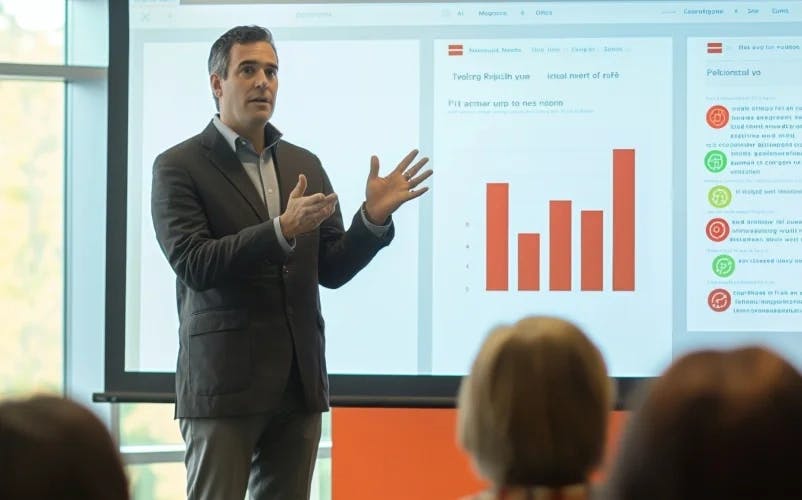Highlights
This case study highlights the strategic transformation achieved through the partnership between the HCLTech consulting team and one of the world's leading financial services companies. By leveraging advanced strategic portfolio management (SPM) solutions, HCLTech consulting experts successfully delivered enterprise-wide agility, addressing significant SPM challenges. This case study provides an in-depth look into the engagement, the rationale for selecting our team as a partner, the delivery process, challenges encountered, lessons learned and future steps.
About the Client
Headquartered in New York City and employing more than 80,000 people globally, this financial services giant is a leader in its industry. Despite implementing an enterprise playbook as the framework for planning and delivery as part of a new enterprise agility initiative, the firm faced ongoing challenges due to the organization's size and complexity.
A synchronized approach to business agility solutions, harmonizing people processes and tools was absent, leading to fragmented solutions and trials of various tools without concrete outcomes.
The Challenge
Overcoming disconnects and inconsistencies in strategic planning and delivery

Planning and delivery were often disconnected because there was no organic visibility between senior leadership's strategic goals and the teams' delivery within the business units. This lack of transparency meant that teams spent excess time creating manual reports, such as the quarterly review reports for Senior Management distributed around the business units for input.
Inconsistencies in strategic portfolio management, with multiple sources of truth, particularly around priority alignment, created difficulties in aligning priorities and identifying value. Attributing investment to value stream programs and tracking dependencies and risks at all levels was often error-prone because of its manual process.
With numerous data sources and instances of siloed team backlogs across several departments and business units, the firm struggled to have a consistent approach to data management, configurations, and connectivity between related tools. These differences meant that running cross-business unit or -department projects and programs was highly manual, leading to inaccuracies and high overhead in managing such programs.
The firm experienced cultural resistance to adopting the enterprise agility framework because there was no consistent toolset. This manifested itself with business units in departments adopting their own tools and processes to suit their needs without a concrete company-wide mandate and governance.

The Solution
Harmonizing people, processes and tools

HCLTech consulting experts led the engagement on three main fronts:
- Scalable implementation: Managing the rapid technical onboarding of business units and teams to ensure a seamless transition of tools and data
- Company-wide rollout: Providing support through every phase of the transition, documenting and aligning standards, best practices and governance
- Outcome-focused adoption: Ensuring quick ROI through hands-on change management and coaching at both management and team levels
During the pilot phase, the team onboarded 20 business units, conducted discovery sessions, workshops and training and aligned data across various tools. This hands-on approach facilitated adoption and drove change within the business units.
The Outcome
Driving agility and business outcomes strategically

This case study underscores the strategic value of engaging consulting firms like HCLTech's consulting team for senior decision-makers seeking to solve strategic portfolio management challenges. The team has proven itself a trusted advisor and problem solver, capable of driving enterprise-wide agility and delivering significant business outcomes in complex, large-scale environments. HCLTech consulting experts team and client's engagement delivered significant outcomes.
- Enhanced transparency: An influential senior manager noted increased visibility of team activities, a key goal of the engagement
- Positive feedback: The pilot averaged an 8/10 for expected outcomes, with 1,500 initial users establishing governance frameworks and best practices
- Increased influence: HCLTech’s consulting role and influence within the firm grew as senior leadership recognized our intrinsic role in successful onboarding and consulting on business unit improvements
- Cross-business unit compliance program: The firm successfully ran its first cross-business unit compliance program as part of a Federal Reserve directive, highlighting the model's potential for future HCLTech consulting engagements

